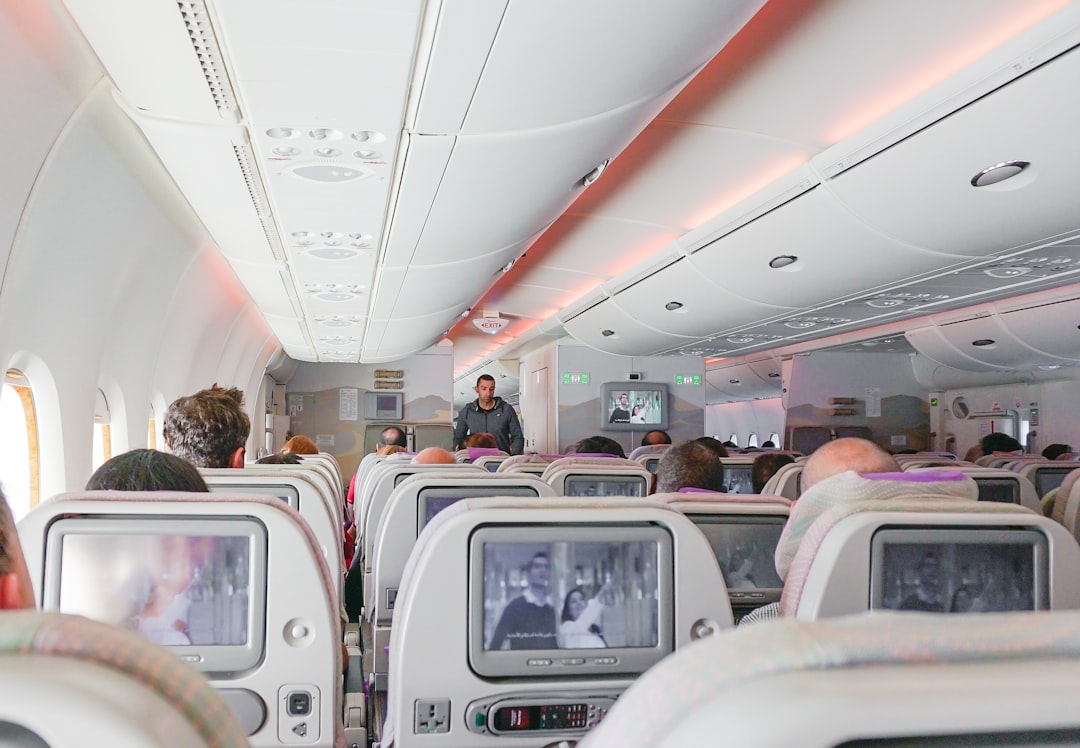Traveling from one destination to another can often be a journey filled with anticipation and excitement, especially when it involves long-haul flights. The route in question connects two vibrant cities, each rich in culture, history, and unique experiences. This particular route has gained popularity among travelers for its convenience and the myriad of options available.
Whether you are a business traveler seeking efficiency or a leisure traveler eager to explore new horizons, understanding the nuances of this route can significantly enhance your travel experience. The journey itself is not merely a means to an end; it is an integral part of the adventure that awaits at your destination. As you embark on this journey, it is essential to consider various factors that can influence your travel experience.
From the choice of airlines to the amenities offered on board, every detail plays a role in shaping your overall satisfaction. Additionally, understanding the best times to book your flight can lead to significant savings and a more enjoyable trip. This article aims to provide a comprehensive overview of the route, including airlines and flight options, duration, airport information, in-flight amenities, and tips for ensuring a comfortable flight.
By delving into these aspects, travelers can make informed decisions that will enhance their journey from takeoff to landing.
Key Takeaways
- The route is a popular one, with multiple airlines offering flights between major cities.
- There are several airlines to choose from, providing a range of flight options including economy, business, and first class.
- The duration of the flight varies depending on the airline and route, with some flights offering direct options and others requiring layovers.
- The best times to book flights on this route are typically several months in advance or during off-peak travel times.
- Airport information includes details about the departure and arrival airports, as well as any amenities or services available to travelers.
Airlines and Flight Options
Choosing the Right Airline for Your Journey
When selecting an airline for your trip, the numerous options can be overwhelming. Many carriers operate on this route, each offering distinct advantages and services tailored to different types of travelers. Major airlines often provide multiple daily flights, ensuring flexibility in scheduling and allowing passengers to choose times that best fit their itineraries.
Low-Cost Carriers and Traditional Airlines
In addition to traditional airlines, low-cost carriers have emerged as viable alternatives, offering competitive pricing and no-frills service that appeals to budget-conscious travelers. Understanding the strengths and weaknesses of each airline can help you make an informed choice that aligns with your travel preferences. Many carriers offer various classes of service, ranging from economy to business and first class.
Classes of Service and Amenities
Each class comes with its own set of amenities and comfort levels, catering to different passenger needs. For instance, business class travelers can expect spacious seating, priority boarding, and gourmet meal options, while economy class passengers may prioritize affordability over luxury. Furthermore, some airlines have introduced innovative features such as in-flight entertainment systems and Wi-Fi connectivity, enhancing the overall travel experience.
Making an Informed Choice
By carefully evaluating the available airlines and their offerings, travelers can select the option that best suits their needs and budget. This allows passengers to prioritize their preferences, whether it’s luxury, affordability, or convenience, and choose an airline that provides the best overall travel experience.
Duration of the Flight

The duration of a flight can significantly impact the overall travel experience, especially on long-haul routes. On this particular journey, flight times typically range from several hours to over ten hours, depending on factors such as layovers and weather conditions. Direct flights are often preferred for their efficiency, allowing passengers to reach their destination without unnecessary delays.
However, some travelers may opt for connecting flights if they offer substantial savings or if they wish to explore additional cities along the way. Understanding the expected flight duration can help travelers plan their schedules more effectively and manage their time at both departure and arrival airports. Moreover, it is essential to consider how flight duration can affect personal comfort and well-being during travel.
Long flights can lead to fatigue and discomfort if not managed properly. Passengers should be aware of the potential for jet lag when crossing multiple time zones and take proactive measures to mitigate its effects. Staying hydrated, moving around during the flight, and adjusting sleep schedules before departure are all strategies that can help ease the transition between time zones.
By being mindful of the duration of the flight and its implications on health and comfort, travelers can arrive at their destination feeling refreshed and ready to explore.
Best Times to Book
| Booking Window | Percentage Saved | Best Time to Book |
|---|---|---|
| 0-3 weeks in advance | 15% | Weekends |
| 3-6 weeks in advance | 20% | Tuesday or Wednesday |
| 6-12 weeks in advance | 25% | Weekdays |
Timing is crucial when it comes to booking flights, as it can significantly influence both availability and pricing. Generally speaking, booking well in advance—typically three to six months before your intended travel date—can yield substantial savings. Airlines often release their best fares during this window, allowing savvy travelers to secure lower prices before demand increases closer to departure dates.
Additionally, being flexible with travel dates can further enhance your chances of finding better deals; flying mid-week or during off-peak seasons often results in lower fares compared to weekend or holiday travel. Conversely, last-minute bookings can sometimes lead to unexpected bargains if airlines are looking to fill empty seats as departure dates approach. However, this strategy carries inherent risks; availability may be limited, and prices could be significantly higher than those found during earlier booking periods.
To navigate this landscape effectively, travelers should utilize fare comparison websites and set up price alerts for their desired routes. By staying informed about pricing trends and being strategic about when to book, travelers can maximize their chances of securing the best possible deal for their journey.
Airport Information
Airports serve as critical hubs in the travel experience, acting as gateways between destinations. The airports involved in this route are equipped with modern facilities designed to accommodate a high volume of passengers while providing essential services that enhance the travel experience. From check-in counters to security checkpoints, navigating these airports efficiently is vital for a smooth journey.
Many airports also feature lounges where travelers can relax before their flights, as well as dining options that cater to various tastes and preferences. Moreover, understanding airport logistics is essential for minimizing stress during travel. Familiarizing yourself with airport layouts can save valuable time when connecting between flights or locating amenities such as baggage claim or rental car services.
Additionally, many airports offer transportation options such as shuttles, taxis, or public transit systems that facilitate easy access to nearby cities or attractions. By taking the time to research airport information ahead of your trip, you can ensure a seamless transition from land to air and back again.
In-Flight Amenities

Enhancing the Travel Experience
In-flight amenities play a significant role in shaping the overall travel experience on long-haul flights. Airlines have increasingly recognized the importance of passenger comfort and entertainment during flights, leading to a wide array of offerings designed to enhance enjoyment while in transit. From comfortable seating arrangements with adjustable headrests to personal entertainment systems featuring movies, TV shows, and music playlists, modern aircraft are equipped with various amenities that cater to diverse passenger needs.
Culinary Delights at 30,000 Feet
Additionally, meal service has evolved significantly over the years, with many airlines now offering gourmet dining options that reflect regional cuisines or cater to dietary restrictions. Passengers may also find complimentary snacks and beverages available throughout the flight, contributing to a more enjoyable experience at 30,000 feet.
Staying Connected in the Air
Furthermore, some airlines provide Wi-Fi connectivity for those who wish to stay connected during their journey or catch up on work tasks while in transit. This added convenience allows passengers to stay productive or entertained, making the most of their travel time.
Choosing the Right Airline for You
By understanding the range of in-flight amenities available on different airlines, travelers can select options that align with their preferences for comfort and entertainment.
Tips for a Comfortable Flight
Ensuring a comfortable flight experience requires thoughtful preparation and attention to detail. One of the most effective strategies is dressing in layers; cabin temperatures can fluctuate throughout the flight, so wearing breathable clothing allows you to adjust accordingly. Additionally, investing in quality travel accessories such as neck pillows or eye masks can significantly enhance comfort during long journeys.
Staying hydrated is also crucial; drinking plenty of water helps combat dehydration caused by cabin pressure and dry air. Another important aspect of comfort is managing your time effectively during the flight. Taking breaks to stretch your legs or walk around the cabin can help alleviate stiffness and improve circulation.
Engaging in light exercises or yoga stretches while seated can also promote relaxation and reduce tension. Moreover, bringing along entertainment options—such as books or downloaded movies—can help pass the time more pleasantly while keeping boredom at bay. By implementing these tips into your travel routine, you can create a more enjoyable flying experience that leaves you feeling refreshed upon arrival.
Conclusion and Final Thoughts
In conclusion, understanding the intricacies of traveling along this popular route can greatly enhance your overall experience as a traveler. From selecting the right airline based on your preferences for comfort and service to being mindful of flight durations and booking strategies, every decision contributes to shaping your journey from start to finish. The importance of airport logistics cannot be overstated; familiarizing yourself with airport facilities ensures a smoother transition between land and air travel.
Ultimately, preparation is key when it comes to ensuring a comfortable flight experience. By taking proactive steps—such as dressing appropriately, staying hydrated, and utilizing available in-flight amenities—you can transform what might otherwise be a tedious journey into an enjoyable adventure. As you embark on your travels along this route, remember that every aspect of your journey contributes to the memories you will create at your destination.
With careful planning and an open mind, you are sure to have an enriching travel experience that leaves you eager for your next adventure.


